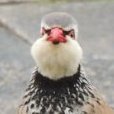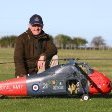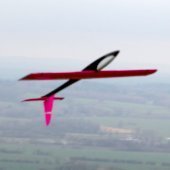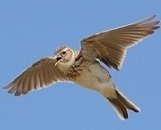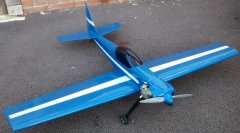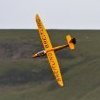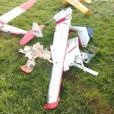Leaderboard
Popular Content
Showing content with the highest reputation on 24/11/21 in all areas
-
Sorted out the problem by making a scale Chuck glider out of depron, scaling at 1” to 1 cms. Tried that until I had a nice glide. meant that I had to move the CG position by approx 1in h forward. Model now flies stable and slow..Picture shows both together. many thanks to all who put forward suggestions.4 points
-
One of the first things I remember as a little one is being lifted up by a kind sailor to have look in the cockpit of Swordfish I was interested in at Fleet Air Arm station HMS Goldcrest RNAS Brawdy open day. Had a soft spot for the Stringbag since.2 points
-
Hello all, I’ve lost a bit of traction on the build of late due to various things but have done most of the stringers on the fuselage in bass wood (lime) thanks for the suggestion AlanP. They feel much stronger than balsa and will only add a few grams. I’m at that stage where I need to plan and possibly install the hardware in the fuselage such as fuel tank, servos and control runs before I do any planking and sheeting. The plans on first inspection seemed pretty comprehensive but as well as omissions there are some inaccuracies i.e. 3mm out in the spar cut-outs in the wing ribs, they don’t correspond to the wing plan view! The full size aircraft’s tail control cables exit the fuselage aft of the gunner’s position so I would like to emulate this detail if only for the rudder. Having never installed a closed loop control run before, are there any good examples I should look at? Also, the tail wheel shown is fixed, should I think about a castoring unit or connected to the rudder? One great feature of the Swordfish is the amazing wing fold system whereby the mainplanes are unlocked from the flight position and folded back to be secured parallel with the fuselage. This was carried out by the deck crew – probably quicker than it’s taken me to type it. It would be great to embody this detail on the model for scale authenticity and transport but would need to be robust and fail-safe for obvious reasons. I’m about to place an order for more material for the wings. Spruce is listed for the spars and balsa for the ribs, which are capped and I’ll cover with Oratex or similar but what grade do folks recommend?. All suggestion appreciated. Cheers, Marty2 points
-
2 points
-
Once you've sorted it the way you want I think you should be able to make it a Global Function. Then you can select that for any ic model you want without having to set each one up individually.1 point
-
Decided to use the wire U/C and 2.25" diameter wheels supplied in the kit. I had previously thought about fitting bigger wheels, say 3", to cope with our patch - plus I was worried about the axle bits which had been cut too short for a collet each side of the wheels on the rear ones - but decided to give the original equipment a go. The trick was to solder a washer to the axle just before it became a radius, using a simple wooden jig to keep the washer in its correct place and perpendicular to the axle (ignore my substandard soldering skills!) and this left just enough room for the collect to fit and its grub-screw to bite.1 point
-
The only clothes he would have had would be what he had when he was captured. On laundry days perhaps he & everyone else would have had to wear what was available from a common pool of spare clothing or whatever the Red Cross were able to supply.1 point
-
1 point
-
It isn't a set criteria, ultimately it is up to the club who are much better aware of the circumstances at their club and of the examiner in question. The 3 questions are simply a guide of what may be considered appropriate to prompt club committees to think whether an examiner is still suitable rather than just ticking a box for them to carry on which we know has happened for some for many years.1 point
-
I'll admit that I had to concentrate on doing the test last night - some of the select multiple answer questions made me think hard. Although it might be seen as an imposition, the value was obvious.1 point
-
Not sure what you're disagreeing about! I'm agreeing that there may be good reasons why an examiner hasn't flown/attended/promoted the scheme regularly during the past year. Ability to fly the schedule? One that I don't consider to be as black and white as the ASRC committee may have decided but a decision that I can respect. Certainly an examiner displaying poor standards of flying or operation will not command any respect and would bring the scheme into disrepute but there could be exceptional circumstances which wouldn't mean that a non-regularly flying examiner wasn't capable of testing a candidate fairly. Maybe this is why the club is allowed an element of discretion?1 point
-
1 point
-
Shouldn’t the secretary simply pass on the committee’s decision? I see it as a good reminder to a club that they are actually the responsible “body” that knows the examiner’s general level of capability and commitment.1 point
-
Martin , i have used stiff card and pva to line my wheel well walls. ie the depth around the edges, cheaper than balsa. Cereal box, etc plenty in the recycling box ?1 point
-
I don't ever recall seeing a target weight quoted without engine! I would expect that would be including engine but not fuel. But of course I don't know that plan..... Nowadays I think the CAA definitions of weight ( 7.5 kilos etc ) includes fuel. The Mike Sun article on folding wings is still on my computer from scanning it for someone else, so it's no problem to send it to you. Send me a Personal Message if you want it.1 point
-
If you haven't built for a long time there could be some newer materials available now which might help. Liteply in 2mm or 3mm is available from SLEC and Balsa Cabin etc. Some people use foamboard instead of balsa in some areas. Worth looking at SLEC website. Also check out Mick Reeves website for thin epoxy glass sheet ( Pro Skin ) and lots of useful fittings. Mike Sun showed a simple way of making folding wings for his DH 60 Moth in an old RC Scale Quarterly - if you haven't seen that I might find my copy and scan it if you ask.1 point
-
Just back from the field ? I tried an 8x6E and it flew perfect on half throttle. Plenty of power for me and controllable more to the point. I think I will leave it as it is and get some more flights in. I could try a 9x5E as part of the experiment. I have only two 2700 4S batteries that fit easily three 2200 4S that are a very tight fit. Modifying the front would give more battery options as well as losing the 60g. Based on my results so far and as advised by @Graham Davies 3I will leave well alone. Thanks for the help everyone.1 point
-
We have a BMFA REP who as part of the affiliation process has to ratify me as an examiner. He is on the committee and is a regular at the patch. As such, he is well placed to confirm or otherwise: 1. Have I been a regular flyer? Yes. 2.With a bit of practice......yes!. 3.Completed a couple of A tests and teaching several new members, so yes. If I didn't fulfill any of the above, I would expect to lose my examiner status. I see what you mean about "Ratify as a club examiner" though. bit odd.1 point
-
Basil, My advice is that if you are unsure about your electronics skills then it's probably best not to risk your plane and the safety of others by attempting to build your own devices for use in such a critical area. Best to purchase a commercially made unit or go conventional and use an arming plug.1 point
-
This is a nice simple one that works on any version of OpenTX. Firstly set a logical switch for the desired throttle percentage - a full tutorial on logical switches is on OpenTX University (the section on a>x is ideal for your needs). Once you have that single logical switch setup (if you have an additional throttle cut already setup set that as an auxilliary condition via the "AND" statement at the end of the logical switch line), then all you need to do is set up the timer to be triggered by it. Oscar Liang has a tutorial on that (though he is using an arming physical switch vs. a logical one the setup is exactly the same), here is the key screen: Painless360 also has content on this; though I haven't watched these specific videos his content is generally very good so I'm sure it will help:1 point
-
Can not see response/like icon results on my own posts but can see everyone else's. To be found anywhere ?1 point
-
'The Great Escape' is IMHO one of those films that just gets it right. It's not a factual documentary but a mix of fiction and fact and pure entertainment that anyone who has read about the real story will understand and accept. Oddly enough the film hasn't really dated that much in the way that the 'Battle of Britain' certainly has.1 point
-
You took the words right out of my mouth Frank!1 point
-
Yes I can. So is it when one looks down the content of a post and there is nothing in my bit it simply has had no response and that's all there is to it?1 point
-
Adrian, if you could replace the wing retaining bolt with a plastic one that may help in an "arrival" breaking instead of pulling the bolt through the fuselage or the fixing out of the wing root. None of my gliders using a wing retaining bolt, they either use the wing snap locks e.g. Multiplex Multilock or just a rubber band between the wings, these will both give in case you happen to do a one wing low landing.1 point
-
1 point
-
Advice taken Nigel and Andrew. Raided my stash of 2mm connector wire with threaded ends to fit the clevises (both from RC World) and made up +/-100mm lengths for both ends of the tail snakes - everything now fully rigid wherever unsupported by hard-points. Yes, the wire is slightly too small a diameter for the inside of the Sullivan inner snake, but with enough epoxy pushed down the tube only a destruction test will budge it. Then glued in the aileron hinges and fitted connectors. At 100% travel on the TX getting +/-30mm, which is the maximum available given the geometry. Instructions say to start with 18mm and increase if necessary. (I recall Andy Stephenson saying earlier that he needed as much as possible for a decent roll-rate.)1 point
-
There's a thread on this subject over here... https://www.rcgroups.com/forums/showthread.php?3016539-High-Power-MosFet&highlight=mosfet1 point
-
anyone want to make a cheap scale model of a U-Boat? ..... i found it on twitter and thought it was quirky. ken anderson...ne..1..u-boat dept.1 point
-
1 point
-
I went for the pva coat tonight after the wax and the same problem occured as with the first fuse half: the pva seems to have no grip in some area's I tought i had solved that problem but i'm wrong. It must be some contamination with silicones or something... I washed the mould clean , degreased it with some mild degreaser , waxed it again and tried another coat of pva. This time i had more luck ! No problems whatsoever !! So , tomorrow i will do this to the whole mould and make it ready for paint !! Sta tuned !! Thanks for watching !! Dirk.1 point

